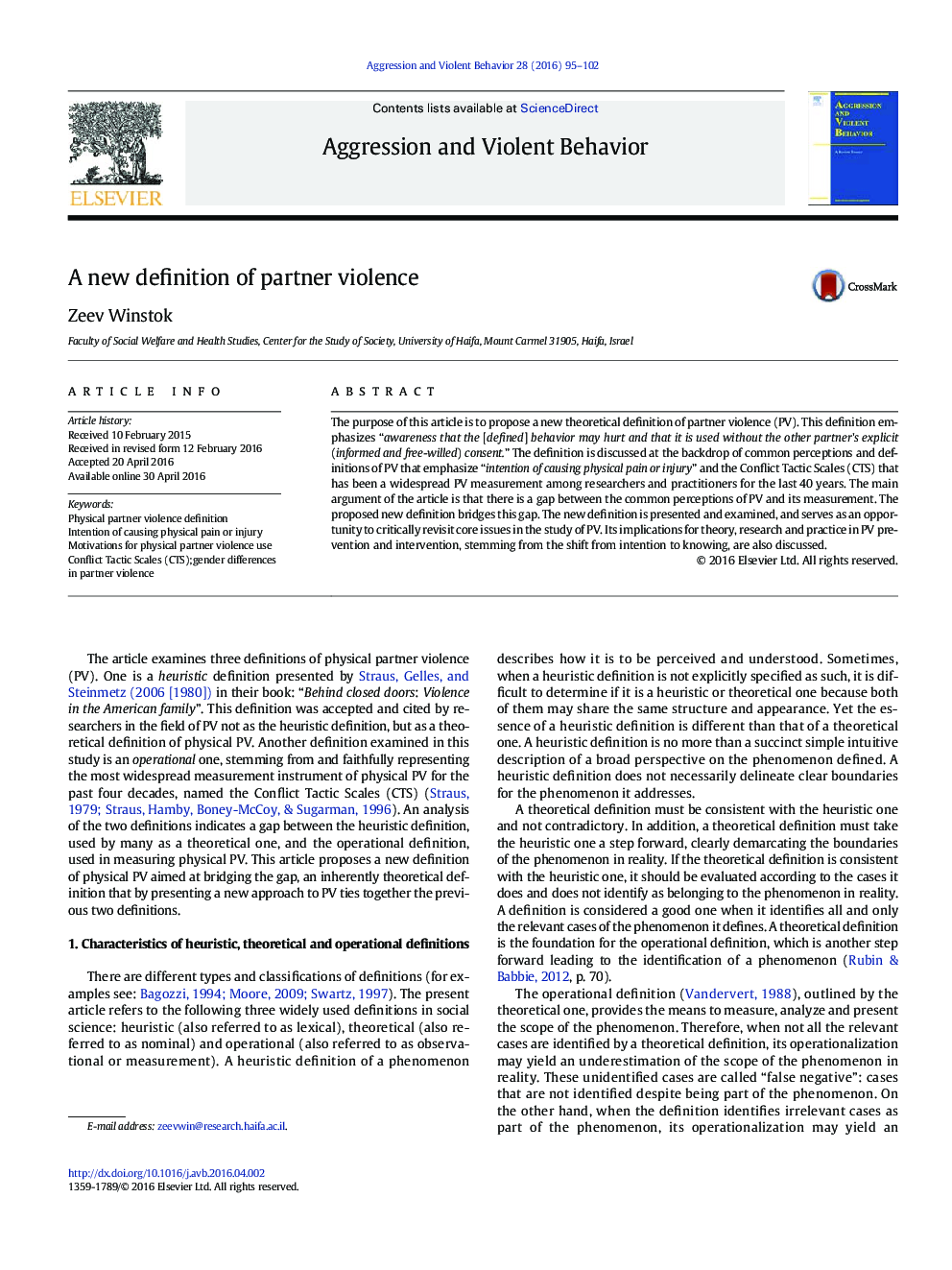| کد مقاله | کد نشریه | سال انتشار | مقاله انگلیسی | نسخه تمام متن |
|---|---|---|---|---|
| 94450 | 160296 | 2016 | 8 صفحه PDF | دانلود رایگان |
• Many use Straus and colleagues' heuristic definition of PV as a theoretical one.
• The heuristic definition of PV focuses on the intention to cause pain or injury.
• The operationalization of PV is not founded on intention to hurt but rather on behaviors with the potential to hurt.
• There is a significant gap between the heuristic and the operational definitions of PV.
• Shifting the focus of the definition of PV from intention to knowing may bridge the gap between the heuristic and operational definitions.
The purpose of this article is to propose a new theoretical definition of partner violence (PV). This definition emphasizes “awareness that the [defined] behavior may hurt and that it is used without the other partner's explicit (informed and free-willed) consent.” The definition is discussed at the backdrop of common perceptions and definitions of PV that emphasize “intention of causing physical pain or injury” and the Conflict Tactic Scales (CTS) that has been a widespread PV measurement among researchers and practitioners for the last 40 years. The main argument of the article is that there is a gap between the common perceptions of PV and its measurement. The proposed new definition bridges this gap. The new definition is presented and examined, and serves as an opportunity to critically revisit core issues in the study of PV. Its implications for theory, research and practice in PV prevention and intervention, stemming from the shift from intention to knowing, are also discussed.
Journal: Aggression and Violent Behavior - Volume 28, May–June 2016, Pages 95–102
